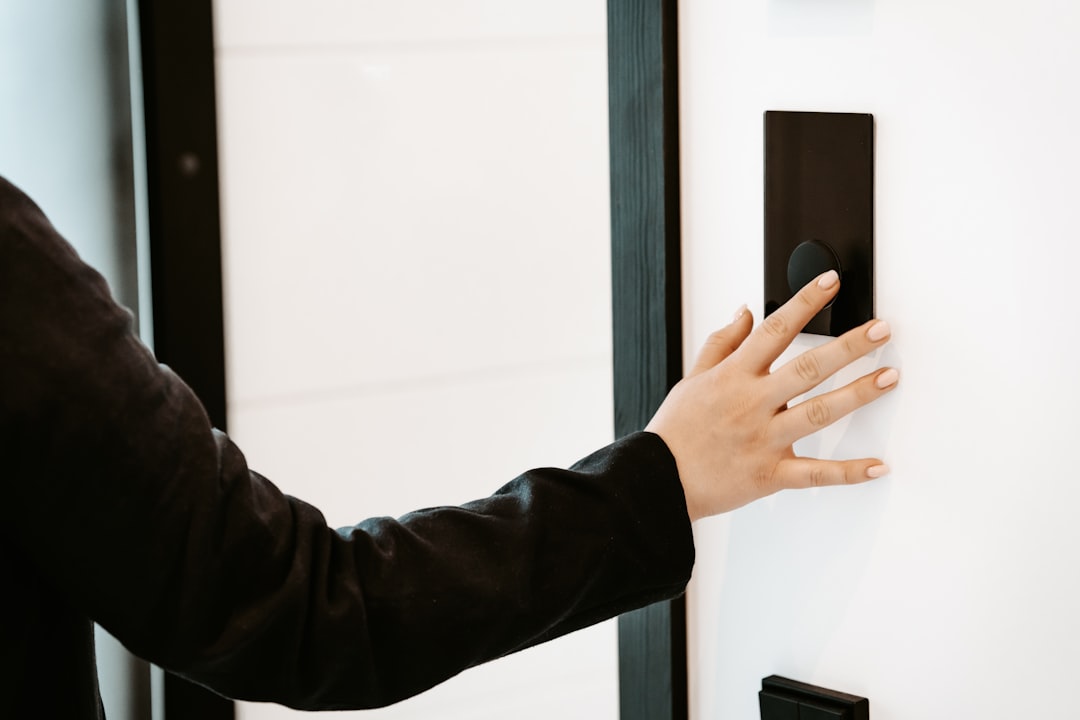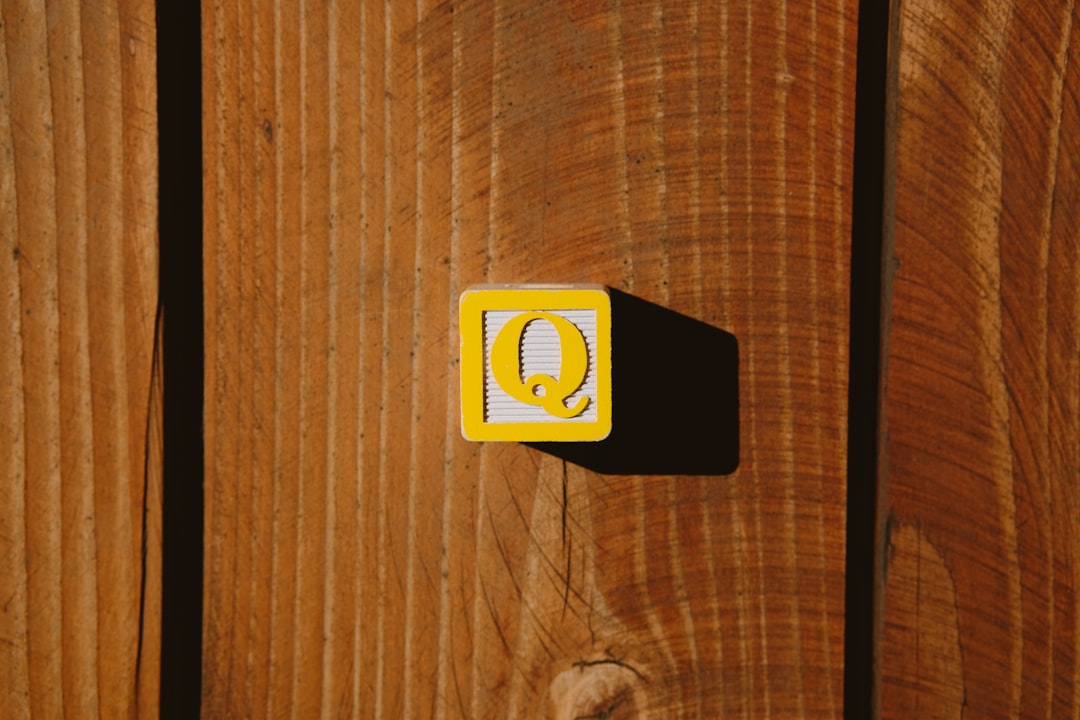

Engage prospects with a scan and streamline customer engagement with FREE QR code marketing tools by Sona – no strings attached!
Create a Free QR CodeFree consultation

No commitment

Engage prospects with a scan and streamline customer engagement with FREE QR code marketing tools by Sona – no strings attached!
Create a Free QR CodeFree consultation

No commitment
QR codes have evolved from a novelty to a strategic powerhouse in bridging offline engagement with online action. For automatic door installation services, QR codes represent an efficient, frictionless, and highly effective way to streamline facility access, automate processes, and track entry events. These solutions address challenges like missed opportunities, lack of visibility, and inconsistent tracking, all without requiring app downloads or complex setup.
Companies specializing in automatic door installation are increasingly leveraging QR codes to replace outdated workflows such as key fobs, printed access cards, or manual sign-in sheets. Pain points like missing high-value prospects who go untracked, or operating on fragmented, outdated data, can leave facilities vulnerable and administrators overwhelmed. By embedding QR technology into entry and exit points, organizations deliver a seamless user experience while improving security, traceability, and operational efficiency.
Modern QR-coded systems can now connect commercial and residential customers to real-time service requests, door automation systems, door management systems, maintenance scheduling, and more. As businesses face pressure to upgrade access control and digitize manual processes, this article explores how incorporating QR codes can help automatic door installation providers deliver greater value, improve access control, and drive meaningful business outcomes, while directly addressing everyday frustrations in the field.

QR codes bridge the gap between physical access points and digital entry management, tackling challenges such as untracked visitors, lapsed security protocols, and manual logging errors. Many service providers struggle with incomplete data on who accesses their facilities, which leads to confusion, lost productivity, and unnecessary risk. QR-powered entry turns doors into data-rich touchpoints so facilities can control permissions in real time and understand usage patterns without adding administrative burden.
To deliver measurable outcomes, align your QR strategy with clearly defined goals. Replace legacy processes like printing visitor badges or distributing temporary keycards with QR passes that expire automatically. Convert paper logbooks into digital forms triggered by scans at the door. Use unique, dynamic QR codes per entrance so you can compare dwell times, peak hours, and pass types across locations. Platforms like Sona QR centralize creation, tracking, and journey management, mitigating errors from incomplete records and enabling predictive service at each access point.
Here is how to harness this power effectively:
Outdated analog processes create friction. Printed brochures rarely convert into service bookings because intent is not captured. Paper sign-in sheets introduce errors and delay audits. Phone-based approvals slow deliveries and maintenance access. QR codes streamline these workflows with direct pathways to authentication, booking, or reporting, and they do so in a way that is traceable and auditable across facilities.
For operations leaders and marketers, this guide helps you replace manual steps with contactless flows that improve experiences and outcomes. Use dynamic codes when conditions change frequently or when you need analytics. Standardize design across your portfolio so tenants and contractors know where to look and how to act. Sona QR is built to support every step of this transformation, from generation and branding to analytics and CRM integration.

Automatic door installation services must deliver fast, reliable, and flexible access experiences for occupants, visitors, and service teams. Persistent issues such as unknown traffic at entry points, forgotten credentials, and heavy administrative overhead cause frustration and can escalate into security breaches. QR codes offer a low-friction way to modernize access via QR code access control while bringing full-funnel visibility to every door event.
The impact extends beyond the doorway. Every printed asset, sticker, placard, or invoice can become a digital bridge that drives action. From appointment cards that lead to a booking flow, to installation signage that ties to warranties and training, QR codes unlock actions that were previously difficult to measure. The result is a connected, measurable journey that improves safety and service quality.
For this industry, typical materials like appointment cards, job-site placards, warranty stickers, service area signage, and user manuals all benefit from QR activation. Each scan can route to a booking, a self-serve knowledge base, or a visitor access pass, making every touchpoint productive and measurable. Linking door decals to service flows is especially effective with stickers and labels.

Automatic door projects involve diverse stakeholders: property managers, tenants, contractors, technicians, and security teams. Each group benefits from a tailored QR format that speeds access and improves accuracy. Selecting the right format ensures the user’s next step is intuitive.
Dynamic QR codes are especially valuable in environments that change frequently, such as multi-tenant offices, hospitals, or public facilities. They allow updates to destinations and permissions in minutes, ensuring you do not lose control when people or policies change. Static codes still have a place for evergreen resources, like installation manuals.
With Sona QR, you can generate all of these formats and manage them in one platform. For automatic door installation services, web links, SMS or email triggers, and Wi-Fi access codes are often the most impactful because they map cleanly to immediate needs like booking, reporting, and setup.
Growth hinges on capturing and acting on intent wherever it appears. Traditional campaigns miss high-value interactions when they occur near the door, in equipment rooms, or during service calls. QR codes convert those moments into measurable, revenue-generating actions.
Think of your environment in layers: public areas, access points, service areas, and post-installation touchpoints. Each layer has opportunities to educate, enroll, renew, or upsell. By adding QR codes where decisions and friction occur, you close gaps that analog processes leave open. You also improve the experience because people can solve problems in seconds without queueing or making a phone call.
Key QR code placements include:
Each placement should be intentional and tied to a measurable next step such as booking, subscription enrollment, or a verification event. Over time, the data you collect from these codes provides a clear map of where your growth is coming from and which touchpoints deserve more investment.

Automatic door providers face operational and revenue risks when interactions go untracked or when customers struggle to find support at critical moments. QR codes help companies shift from reactive tasks to proactive service across the lifecycle.
A strong QR program addresses installation, operations, and long-term service. It ensures that the next action is always clear whether that is checking in for a planned service, requesting a repair, or reviewing usage policies. It also gives teams a closed loop for lead capture and retention because every scan gets measured.
Each of these use cases can be tracked. Measure scan volume by location, conversion rates to bookings or support tickets, and time-to-resolution after a scan. Many teams report double-digit reductions in time-to-service and significant increases in warranty registrations when QR codes simplify the journey.
Every QR scan contains signals about the person, the context, and the intent. When you deploy multiple codes across touchpoints, you can segment audiences automatically and use this data to fuel precise follow-up. This turns anonymous, offline interactions into targeted sequences that accelerate revenue.
In automatic door installation services, your audiences typically include property managers, facilities teams, security staff, contractors, and tenants. Scans can tell you which role is engaging, which location or property they care about, and what they need. A weekend scan on a maintenance sticker likely signals urgency. A scan on a brochure at a trade show suggests early-stage interest. Use these distinctions to personalize.
Industry-specific distinctions help refine targeting. Segment facility managers versus building owners, differentiate tenants from contractors, and separate residential inquiries from enterprise campus needs. Over time, use performance data to weight outreach toward segments that convert at the highest rate.
QR codes operate as connectors across offline and digital channels, helping you engage people where they are and capturing data from places that were previously dark to analytics. When integrated well, they give you a cohesive experience that carries from the door to your CRM.
In automatic door installation services, customers encounter your brand in multiple places. They might see a fleet vehicle on the road, a technician at their building, a brochure in a property manager’s office, or a display at a facility conference. With QR codes, all of these become onramps that lead to measured actions such as booking consultations, enrolling in maintenance plans, or requesting upgrades.
QR codes serve as the offline onramp to your digital marketing engine. With a centralized platform like Sona QR, you can manage codes, monitor performance, and sync data with your CRM and ad platforms to ensure consistent, personalized follow-up.
Even strong strategies fail when execution lacks structure. A repeatable framework ensures your QR program improves over time and that you capture the full value of every scan. Start with a clear goal, pick the right format, put the code where it will be used, and measure what happens after the scan.
The following five-step checklist is tailored to automatic door installation services. It replaces guesswork with a simple process you can deploy across buildings, teams, and campaigns.
Define the outcome you want and who will use the code. For access, you might launch secure visitor passes that expire after a set time. For service, you might route scans from controller stickers to a pre-filled repair request. For revenue, you might drive scans from brochures to a site assessment booking page.
Identify the business impact. Are you aiming to reduce credential costs, lower time-to-dispatch, or capture more leads from the field? Write down one outcome metric such as a target reduction in manual sign-ins or a target increase in booked consultations.
Select static or dynamic based on your need for change and tracking. Static works for evergreen resources like a PDF manual. Dynamic is the default for access, booking, and campaigns because it supports edits and analytics.
For most installations, dynamic codes are preferable. You can update permissions or destinations without replacing stickers. Using Sona QR, you also capture scan time, location, and device, which supports retargeting and optimization.
Design for real-world conditions. Add your logo, brand colors, and a border that instructs action. Pair with a short, benefit-driven call to action such as Scan for service or Scan for visitor pass. Size appropriately for distance, ensure high contrast, and maintain a quiet zone around the code.
Test scans across devices, angles, and lighting conditions. Validate in situ on metal doors, glass panels, and textured walls. Confirm the landing experience is mobile friendly and loads in under three seconds. A short test plan will prevent most adoption issues.
Place codes where they intersect real behavior. Use entry signage for credentialing, controller stickers for maintenance, and direct mail for decision-maker outreach. Supplement with placements on fleet vehicles, technician badges, and showroom displays to extend reach. For smartphone-based entry, explore mobile access control.
Match placement to the environment. For exterior doors, use weatherproof materials and tamper-evident overlays. For high-traffic lobbies, position codes at eye level with clear directional arrows. In conference settings, include codes on booth towers and handouts to capture interest during and after sessions.
Monitor scan volume, conversion rates, and downstream actions like booked visits or closed tickets. Use UTM parameters to attribute source and medium, then compare performance by placement, message, and audience. In Sona QR, set alerts for scan spikes or drop-offs, then iterate on design and CTA.
Optimize relentlessly. A or B test landing copy, form length, and offer type. Retire underperforming placements and double down on those that drive conversion. Share insights with field teams so they understand which messages and codes resonate.
A structured approach reduces rework and accelerates results. With a system in place, each new building, customer segment, or campaign becomes easier to launch and more profitable to scale.

Tracking scans is only the beginning. You need to know whether a scan led to a form fill, a scheduled visit, a signed maintenance contract, or an upsell to a higher-tier automation system. Without linking scans to outcomes, you are guessing about what works and where to invest.
A modern analytics stack connects QR activity to your pipeline. It captures who scanned, when, and where, then enriches contact records in your CRM. It evaluates which placements and messages drive action, not just attention. It also supports identity resolution when anonymous scans later become known leads through a form or a sales conversation.
With Sona QR and Sona.com, you gain end-to-end visibility. Sona QR captures real-world engagement at every door and device. Sona.com connects those engagements to outcomes through identity resolution, attribution, and buyer journey analytics. The result is clarity on which QR programs drive revenue and where to scale.
Sustained success requires ongoing refinement. Use what you learn from scans to update placements, improve messaging, and empower teams that work closest to customers. Small adjustments to copy, size, and location can dramatically increase scan rates and downstream conversions.
Focus on the workflows that matter most: access, service, and sales. Create a feedback loop with field technicians and property teams. Ask which codes get used, where people hesitate, and how often scans convert to the intended action. Then test improvements and roll out winners across your portfolio.
Creative deployments can multiply results. Place QR codes on invoices to streamline maintenance renewals and on technician ID badges for instant verification and feedback submission. Incorporate end-of-job door decals that invite building occupants to report issues directly, which routes small problems to your team before they become expensive failures.
For automatic door installation services, QR codes are a catalyst for innovation that replaces manual access, patchy visibility, and missed engagement with connected, measurable experiences. By transforming entry points, service panels, and printed assets into digital onramps, companies move from fragmented analog processes to unified systems that capture intent and drive action.
Businesses can now expect:
The path forward is practical and scalable. Start by selecting one or two use cases that map to pressing needs such as visitor access or maintenance booking. Choose dynamic codes for flexibility and analytics. Standardize design and placement, then measure everything. With Sona QR, you can generate and track your first QR codes in minutes. Start creating QR codes for free, centralize performance, and connect outcomes to revenue through Sona.com.
Introducing QR codes to automatic door installation services is not only about digitizing access. It is about solving the pain points that drain time and budget: missing high-value prospects, inconsistent tracking, and lost opportunities at the edge. Integrate QR solutions at every stage of your lifecycle to unlock operational efficiency, elevate customer satisfaction, and accelerate measurable growth. In an environment of increasing complexity and demand for immediacy, every scan becomes a step toward a more connected, data-driven future.
QR codes have revolutionized the automatic door installation services industry by transforming traditional access control and customer interactions into seamless, data-driven experiences. From streamlining secure entry to enhancing service efficiency and customer satisfaction, QR codes empower businesses to automate access management while gaining valuable insights into user engagement and operational flows. Imagine effortlessly tracking installation requests, verifying technician credentials on-site, and providing customers quick access to manuals or support—all through a simple scan.
With Sona QR, you can create dynamic, trackable QR codes that update instantly without costly reprints, connecting every scan to actionable data and improved service outcomes. This means faster customer acquisition, smoother project management, and elevated client trust through transparency and convenience. Start for free with Sona QR today and unlock the full potential of QR technology to drive growth and innovation in your automatic door installation services.
QR codes enhance automatic door installation services by providing frictionless, secure access, improving operational efficiency, enabling real-time tracking, reducing credential management costs, and delivering actionable data for marketing and service improvements.
Choose a provider that offers dynamic QR code solutions with centralized management platforms, supports multiple QR formats for access and service, provides analytics and integration with CRM systems, and emphasizes clear design, testing, and optimized placements.
Automatic door solutions include dynamic and static QR codes for access passes, web links to booking portals, service request forms, installation documentation, vCards for contacts, SMS or email triggers, Wi-Fi access codes, and app download links to support various user needs.
Maintenance involves placing QR codes on door frames and service panels for on-demand repair requests, monitoring scan data to trigger service priorities, scheduling routine upkeep via linked QR workflows, and using analytics to reduce downtime and improve response times.
While exact costs vary, QR code-based systems reduce expenses by cutting physical credential printing and distribution costs, lowering administrative overhead, and enabling scalable, measurable access control, making the overall investment more cost-efficient.
Use Sona QR's trackable codes to improve customer acquisition and engagement today.
Create Your FREE Trackable QR Code in SecondsJoin results-focused teams combining Sona Platform automation with advanced Google Ads strategies to scale lead generation

Connect your existing CRM

Free Account Enrichment

No setup fees
No commitment required

Free consultation

Get a custom Google Ads roadmap for your business






Launch campaigns that generate qualified leads in 30 days or less.
